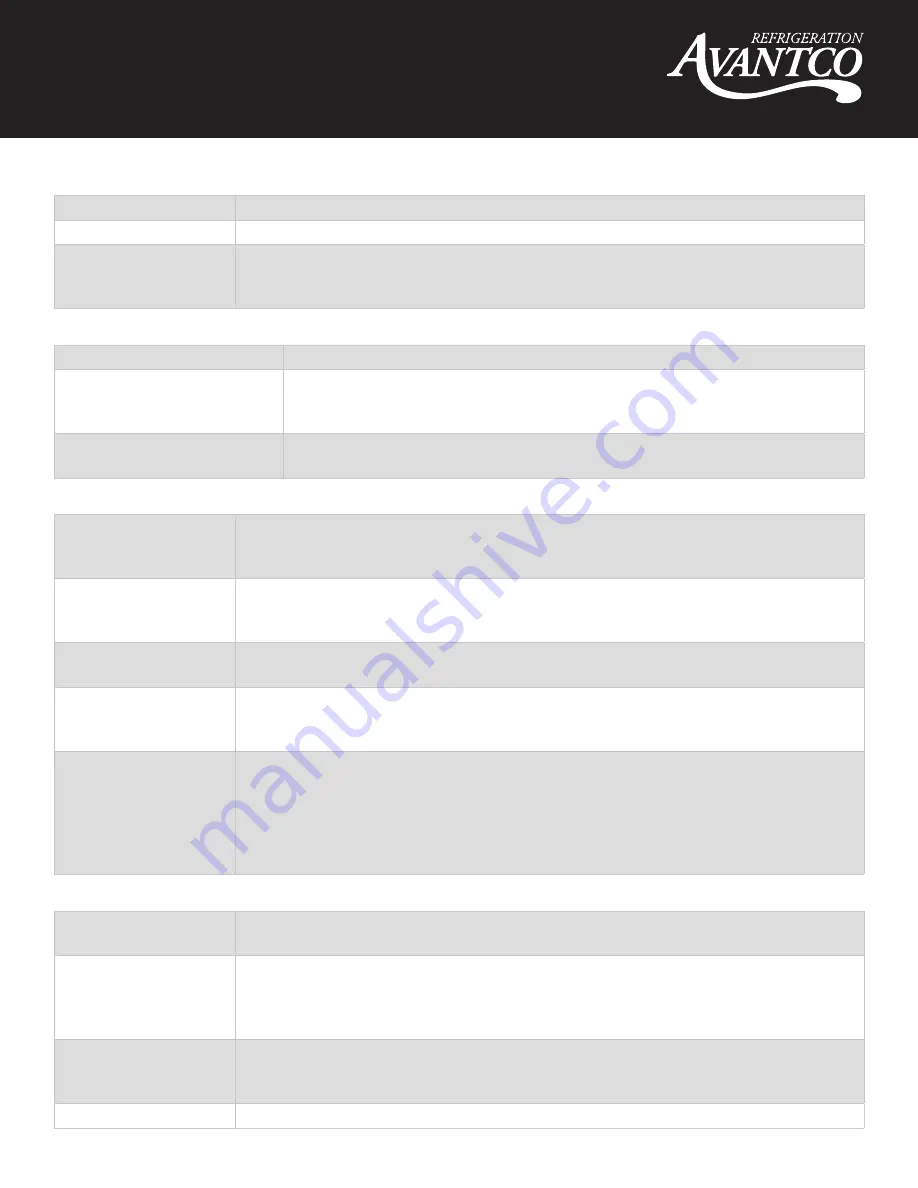
- 12 -
User Manual
Cloudy Beer:
Dirty glass or faucet.
Clean the lines and faucet. See also “Greasy glasses” under flat beer.
Beer too cold.
Raise the temperature of the keg slightly.
Improper pour.
Open the faucet quickly and completely. Hold the glass steady at a 45º angle. When
it is
⅔
full, start straightening the glass. Proper foam should be a tight creamy head
and the collar on an average glass should be ¾” to 1” high.
False Head (large, soap-like bubbles that dissolve quickly):
Dry glasses.
Rinse the glasses in fresh cold water just before pouring.
Improper pour.
Open the faucet quickly and completely. Hold the glass steady at a 45º angle.
When it is
⅔
full, start straightening the glass. Proper foam should be a tight
creamy head and the collar on an average glass should be ¾” to 1” high.
Coils or direct draw beer lines
warmer than beer in keg.
Adjust the unit’s temperature.
Wild Beer (too much foam, not enough liquid beer):
Beer drawn improperly. Open the faucet quickly and completely. Hold the glass steady at a 45º angle. When
it is
⅔
full, start straightening the glass. Proper foam should be a tight creamy head
and the collar on an average glass should be ¾” to 1” high.
Kinks, dents, twists or
other obstructions in
line or faucet.
Check for, and replace any kinked, dented, or twisted lines from the barrel to the
faucet. Clear any obstructions.
Beer too warm in kegs
or lines.
Adjust the unit’s temperature. Keep kegs of beer refrigerated at all times at 40ºF or
less, all year round!
Too much pressure.
First, check the source of pressure to make sure it is working. Then adjust the pressure
to suit a properly balanced system. The correct beer flow should fill a 10 oz. glass in 4
seconds at the proper temperature.
Too much CO2
Adjust the CO2 pressure to as low as possible. However, the applied pressure must
remain slightly higher than the internal pressure of the beer. No more than 18 lbs.
should be applied. The proper amount should be between 10-12psi/lbs. The colder
the beer and the higher the applied CO2 pressure, the more rapid the absorption
of CO2 by the beer. This over-carbonates the beer. Check the pressure regulators
periodically to ensure that the operating pressures remain constant.
Bad Taste:
Dirty faucet.
Brush and clean the tap properly. It should be scoured using a detergent, then rinsed
clean.
Old or dirty beer lines.
Beer lines should be flushed after each keg is emptied. Maintain fresh, clean, sanitary
conditions around the dispenser. Smoke, cooking odors and disinfectants will harm the
taste and flavor of beer. These conditions, as described, may come from an air source
or from actual contact with the glass when drawing beer.
Temperature too warm. Improper transportation/storage of beer kegs. Beer that is delivered on an open truck
during high summer temperatures, or stored improperly may start a secondary
fermentation process.
Dry glasses.
Rinse the glasses in fresh cold water just before pouring.






























